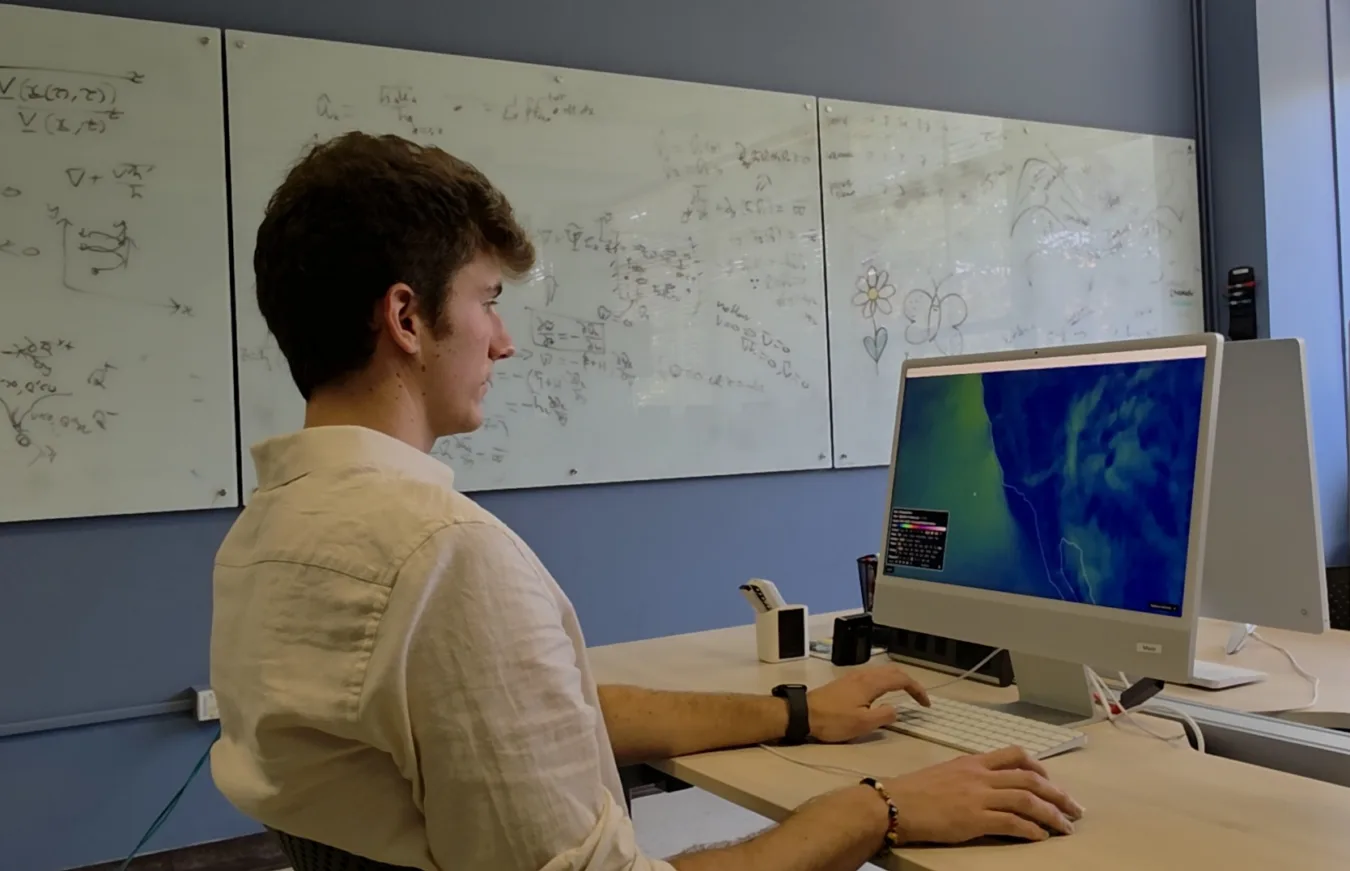The department of Atmospheric and Oceanic Sciences’s new undergraduate certification program is designed for students interested in gaining hands-on experience they can implement in the real world after graduation. This unique program, now in its second year, is perfect for young scientists with an interest in meteorology, climate science, policy and communications. Learn more about the program below.
1. Who is eligible to receive the certificate and what needs to be done to get eligibility?
This certificate program is open to all UCLA undergraduate students. If you have a passion for exploring our atmosphere, then this is for you. Or, if you are already pursuing a degree in the physical sciences but would like to apply it to a fundamental study, then consider enrolling!
Students are eligible to enroll if they have taken the Math, Physics and Chemistry courses that are either required or strongly recommended. Phys 1A/B/C is required, Chem 20 A/B, Math 31 A/B, 32 A/B, 33 A/B, are strongly recommended, Phys 4AL, 4BL is suggested. The good news is that many undergrads from the physical sciences and other areas already qualify based on the courses they need for their regular studies.
Visit the link for more information on the specific courses and requirements.
2. What specific types of classes/subjects/technical skills/field opportunities are part of this certification that are unique, or otherwise might not be taken by students?
The program has both theoretical and hands-on operational forecasting classes, such as AOS 181, Analysis and Predictions of Weather Systems, where students will have the opportunity to create their own forecasts. The certificate also provides a chance to network and hear from expert meteorologists and scientists in the field through guest lectures and field trips to the local National Weather Service Offices.
Other classes include learning about different spatial scales of weather systems, from local microscale turbulence to synoptic scale storms. Students will also work with our roof-top weather stations data, learning how to validate their forecasts.
3. What are the benefits to industry that are attractive about this program and what are some of the specific areas that students might go into after graduation?
This certificate prepares students to pursue a career in operational meteorology after their undergraduate degree. A student can work as an operational meteorologist, incident report meteorologist, research meteorologist, broadcast meteorologist, and in consulting, just to name a few!
4. How unique is this certification among departments across the country?
This program stands out because of its emphasis on hands-on, real-world meteorology training that most departments don’t offer. Students not only study weather systems in the classroom but also analyze real-time data from rooftop weather stations and create their own forecasts using professional tools.
The communications aspect of the program is another important point. Our faculty have broadcast and industry experience in meteorology, ensuring students learn directly from practitioners. In addition, seminars and collaborations with the National Weather Service, including visits to local forecast offices, give students firsthand exposure to how meteorology informs public safety and community decision-making. Together, these elements make the program not just uniquely immersive, but professionally grounded.
To learn more about the program, please contact Director of Meteorology & Adjunct Assistant Professor
Atmospheric and Oceanic Sciences Department, Janine Baijnath-Rodino at janinebr@g.ucla.edu
